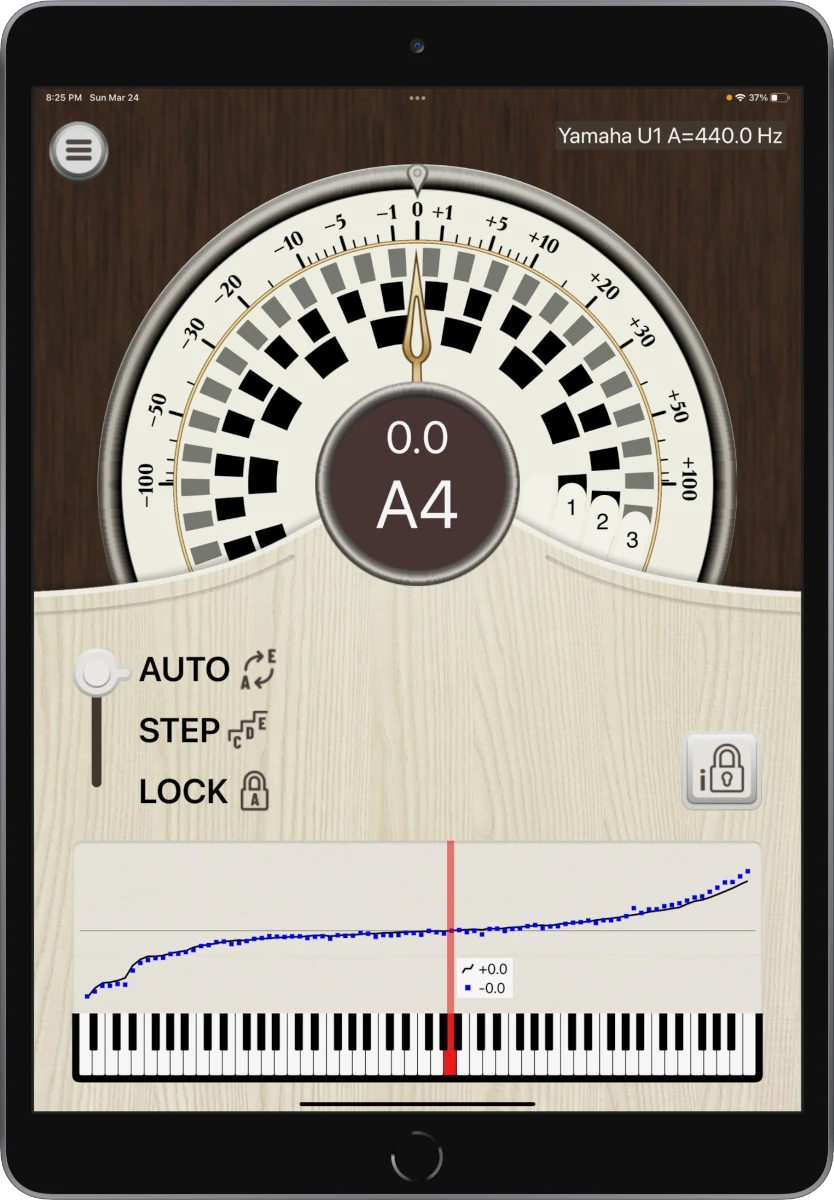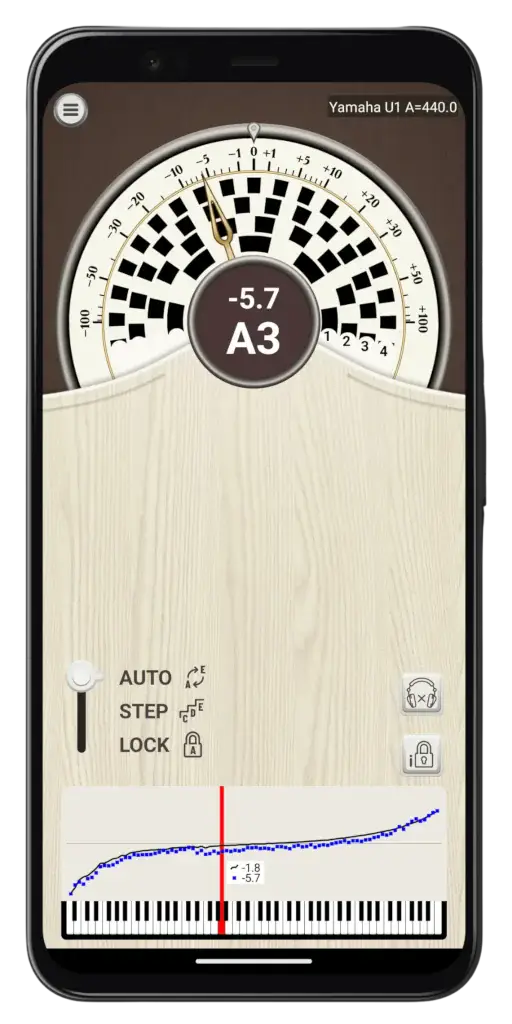
PianoMeter is a user-friendly piano tuning app that will transform your Android or iOS device into a professional quality electronic tuning aid.
Unlike generic tuning apps that simply target a pre-calculated equal temperament, PianoMeter actively measures the tonal characteristics (inharmonicity) of each note and automatically calculates the ideal “stretch” or offset from equal temperament. In other words, it creates a custom tuning for each piano with the best compromise between intervals like fifths, fourths, octaves, and twelfths, the way aural piano tuners do when fine-tuning a piano by ear.
Functionality for both hobbyists and professional piano tuners
PianoMeter has three levels of functionality: a free (evaluation) version, a paid “plus” version with basic tuning functionality, and professional version with features geared towards professional piano tuners. The extra functionality is unlocked through in-app purchases.
| Free | Plus | Pro | ||
|---|---|---|---|---|
| Evaluate a piano | ✓ | ✓ | ✓ | Tuning functionality for select sample notes only. Evaluate if a piano is roughly in tune using the graph at the bottom |
| Automatic note switching | ✓ | ✓ | ✓ | Automatic note detection and switching |
| Measure inharmonicity | ✓ | ✓ | ✓ | Sample inharmonicity for notes from A0 to C7 |
| Tune the entire piano | ✓ | ✓ | Tuning functionality for the entire piano (not just the mid-range) | |
| Unequal temperaments | ✓ | ✓ | Choose from a selection of historical temperaments or input offsets for your own | |
| Change from A=440 | ✓ | ✓ | Tune to frequency standards other than A=440 | |
| Calibrate device | ✓ | ✓ | Calibrate device to an external frequency source | |
| Save and load tuning files | ✓ | Save and load multiple tuning files so a piano doesn’t need to be re-measured each time it is tuned | ||
| Pitch raise (rough tuning) | ✓ | Pitch raise functionality that calculates overpull for a “rough” tuning (for pianos that are extremely flat) | ||
| Customize tuning styles | ✓ | Create custom tuning curves by adjusting interval weighting and stretch | ||
| Plus | Pro | |||
| Annual subscription | US $70 |
Full functionality at a low upfront cost | ||
| One-time purchase | US $30 |
US $350 |
Includes all future updates, no subscription required |
What makes PianoMeter different from other piano tuning software?
1
Automatic Stretch
PianoMeter automatically calculates the “stretch” that is best suited to whatever piano you are tuning. No more trying to decide whether and where to tune 4:2, 6:3, 8:4, or 5:10 octaves, or wondering which tuning “profile” works best for different sizes of piano. This is particularly helpful on short, poorly scaled pianos.
2
Multiple intervals
Unlike other tuning platforms that set a “temperament” and then calculate the tuning outward with stretched octaves, PianoMeter independently calculates the ideal tuning of all 88 notes based on multiple interval relationships with other notes. The algorithm finds its optimal tuning based on minimizing the beat rates of the following intervals:
- octaves (2:1, 4:2, 6:3, 8:4, and 10:5)
- twelfths (3:1, 6:2, and 9:3)
- fifths (3:2 and 6:4)
- fourths (4:3 and 8:6)
- nineteenths (6:1)
- elevenths (8:3)
- double octaves (4:1 and 8:2)
- triple octaves (8:1)
All together, PianoMeter analyzes and optimizes over 1,200 aural tuning intervals!
3
Multiple partials
PianoMeter displays real-time feedback from multiple harmonics/partials instead of just one. This makes it less susceptible to putting notes in the wrong place due to one partial being “out of tune” from its inharmonicity model.
4
Transparency and Visibility
PianoMeter shows you graphs of the actual inharmonicity data for the piano, and the actual “Railsback” tuning curve in an intuitive graphical format that gives users a birds eye view of what a tuning looks like. It can also display a live frequency spectrum spanning the range of the piano. Pro users gain access to a first-of-its-kind colorful “Tonal Energy” display that shows a live 2-second history of the pitch center.
5
Affordability
PianoMeter is available at a fraction of the cost of other professional piano tuning apps and hardware ETDs, and the “Plus” version in particular provides an affordable entry point into piano tuning for beginners and non-professionals. When beginning tuners are ready to upgrade from “Plus” to “Pro”, the price is discounted to account for the price of the “Plus” version.



